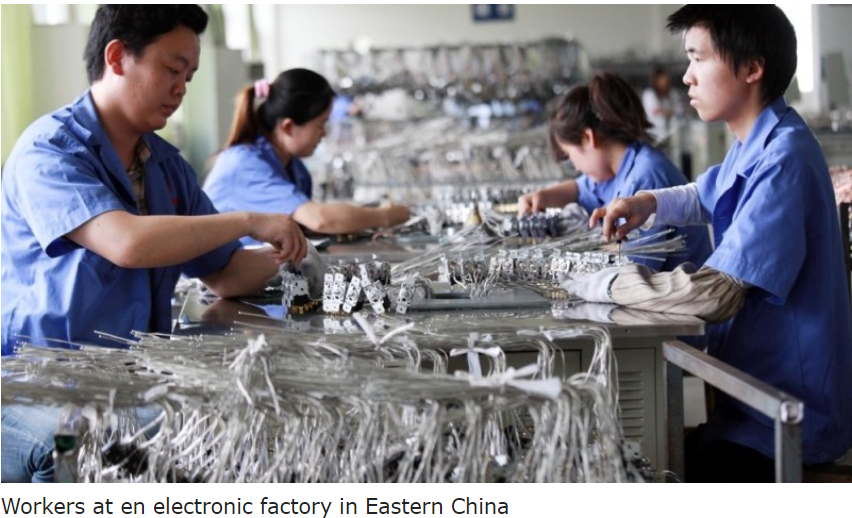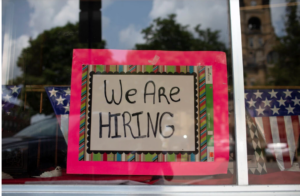Banken ING forudser, at Kina får en stærkere vækst i hele 2022 end i fjerde kvartal sidste år. Prognosen lyder på 5,4 pct, mens den blev på 8,1 pct. i 2021. ING venter, at centralbanken vil lempe pengepolitikken, så den kan sikre en stabil vækst, og lokalregeringer har fået ordre om igen at stimulere investeringer i infrastrukturen. Grundlæggende er der stor vækst i dele af produktionen, f.eks. i grønne biler og industrirobotter på henholdsvis 145 og 45 pct. sidste år – og totalt steg industriproduktionen med 9,6 pct., mens detailsalget steg med 12,5 pct. Men der er også “miner” i feltet. På grund af handelskrigen med USA og USA’s forsøg på at begrænse den kinesiske teknologiske udvikling, satser Kina nu på at blive selvforsynende i den avancerede teknologi, og det kræver enorme investeringer, der umiddelbart går ud over væksten.
China will grow faster in 2022 than it did in 4Q21 with easier monetary and fiscal policy
Easier monetary policy was confirmed by today’s MLF cut. Before that, the central government had instructed local governments to be more active in infrastructure investment. Unless the global recovery is really slow we expect full-year GDP growth in 2022 to be faster than it was in 4Q21
GDP grew 4% in 4Q21, not a bad report card
Let’s talk about numbers. China’s economy grew 8.1% for the full year 2021. This was partly due to the low base growth of only 2.2% in 2020.
Overall, industrial production grew 9.6% over the same period. The industries that grew the most included “new-energy” cars at 145.6%, and industrial robots at 44.9%. Industrial profits grew 38% up to November 2021 with a profit margin of nearly 7%. On services, activities on telecommunications grew 17.2%, while catering grew only 14.5%. This is the kind of pattern that the government is looking for as its policy points in the direction of upgrading its production.
Retail sales grew by 12.5% in 2021 from 2020. Catering sales were up 18.6% but were still beaten by up-market spending (for example on Jewellery, which grew 29.8%). Growth in retail sales was only 1.2%YoY in December 2021, which looks scary. But if we exclude automobiles, the growth rate was better at 3%.
This divergence shows how serious the semiconductor chip problem is on automobile production and investment and how eventually this hurts sales. Covid also plays a part in dampening catering, and even the core rate of retail sales growth at 3% was still low by China standards.
Fixed asset investment grew by only 4.9% in 2021 as infrastructure investment increased at a mere 0.4% pace. Most of the growth came from telecommunications and advanced technology. This weakness in infrastructure stems from central and local governments being preoccupied with real estate developer issues. The other factor was that fiscal resources were partly spent on Covid measures, and there was not much spare money for infrastructure under a very prudent fiscal deficit policy.
Both exports and imports grew around 21%, which was robust. There is almost no consumer inflation pressure in China. Production prices rose 11%, so profits should be squeezed. Trade should keep its momentum in 2022 as global growth is expected to be better this year.
Hidden gem and hidden land mine
The hidden gem in these figures is in investment in advanced technology. This is partly the result of the land-mine that is the US-China relationship. As the US is restricting technology exports to China that can find a dual-use for military and commercial purposes, China has had to invest to build up its own capacity in advanced technology.
This is an arena that has the potential for very high growth. Even if in the coming years of investment, China can only achieve the existing level of technology of the US and its allies, massive investment in this sector over the coming years should overcome current bottlenecks.
Another potential land mine is the trade war between the US and China. The trade agreement ended in November 2021. Neither China nor the US completed their commitments as pointed out by the Peterson Institutes for International Economics. This could make the trade relationship worse if the US picks up on this on top of the ongoing confrontation on trade in advanced technology.
Stability means looser monetary and fiscal policy plus milder reform type policies
The start of the day brought a 10bp cut in the 1Y Medium Lending Facility (MLF) to 2.85% from 2.95%. This cut combines a follow-up of the previous 5bp cut in the 1Y Loan Prime Rate (LPR) and raises the prospect of further cuts. Although the cut was small in absolute terms, it was still larger than the market had expected. The latest move confirms that monetary easing is underway in China at the same time as expectations for tightening in the US are firming.
On fiscal policy, the central government has already told local governments to spend funds raised through specialised bond sales in 2021 on infrastructure projects by the end of 1H22. That should give infrastructure investment a decent boost, and should support GDP growth.
Stability also means softer policy action but deleveraging on real estate will continue
The government has made clear its objective of a stable economy in 2022. Consequently, we do not expect there to be a repeat of the aggressive policies we saw in 2H21. The most radical policy to remain in force will be deleveraging for real estate developers, which we believe will end up as M&A activity to reduce debt ratios for the most heavily indebted real estate developers. SOEs will replace some POEs in the industry.
Forecasts on monetary policies, USDCNY and GDP
We expect there will be 5bp cuts in the 1Y LPR each month during the first half of the year (i.e. 30 bps for 1H21). We base this view on the latest monetary policy actions and the Central Government’s goal of stable economic growth. If there are more hurdles, e.g. from Covid, or from the US-China relationship, we expect to see additional easing, most likely from RRR cuts.
Hopefully, we will see stable economic growth by 2H22. If not, the PBoC will need to keep cutting interest rates, and also cut the RRR even further.
We expect USDCNY to be about 6.5 by the end of 2022. But this could change if China’s rate cuts come faster than we expect.
GDP should be around 5.4% for the full-year of 2022. Again this depends on Covid, chip shortages, and the US-China relationship.







